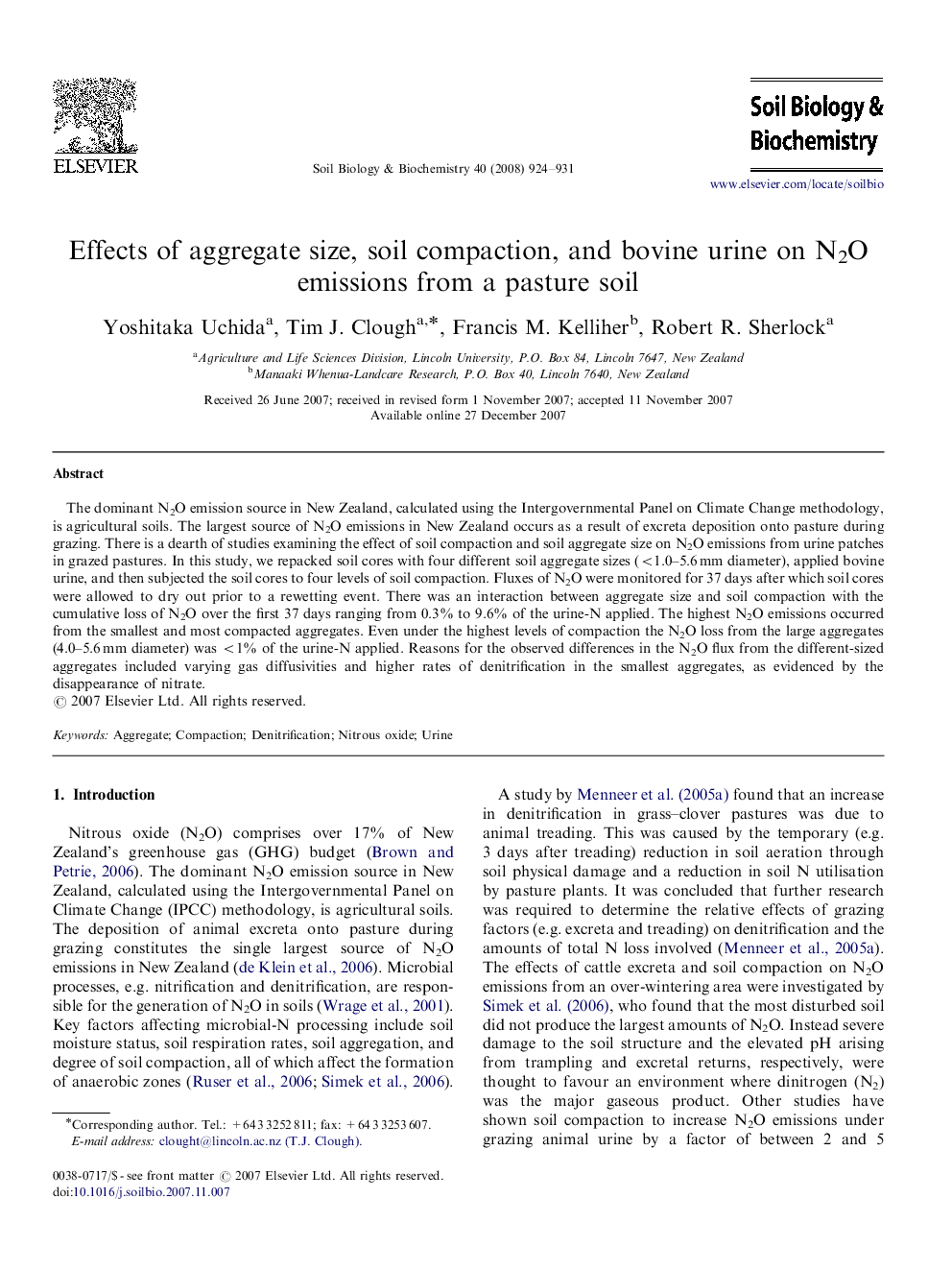| Article ID | Journal | Published Year | Pages | File Type |
|---|---|---|---|---|
| 2026445 | Soil Biology and Biochemistry | 2008 | 8 Pages |
The dominant N2O emission source in New Zealand, calculated using the Intergovernmental Panel on Climate Change methodology, is agricultural soils. The largest source of N2O emissions in New Zealand occurs as a result of excreta deposition onto pasture during grazing. There is a dearth of studies examining the effect of soil compaction and soil aggregate size on N2O emissions from urine patches in grazed pastures. In this study, we repacked soil cores with four different soil aggregate sizes (<1.0–5.6 mm diameter), applied bovine urine, and then subjected the soil cores to four levels of soil compaction. Fluxes of N2O were monitored for 37 days after which soil cores were allowed to dry out prior to a rewetting event. There was an interaction between aggregate size and soil compaction with the cumulative loss of N2O over the first 37 days ranging from 0.3% to 9.6% of the urine-N applied. The highest N2O emissions occurred from the smallest and most compacted aggregates. Even under the highest levels of compaction the N2O loss from the large aggregates (4.0–5.6 mm diameter) was <1% of the urine-N applied. Reasons for the observed differences in the N2O flux from the different-sized aggregates included varying gas diffusivities and higher rates of denitrification in the smallest aggregates, as evidenced by the disappearance of nitrate.
